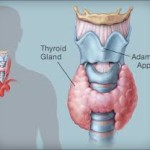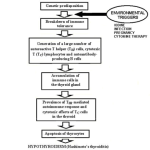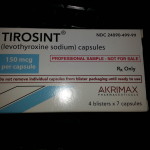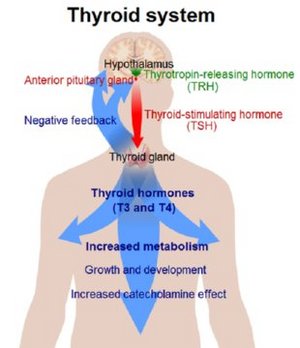
Nearly 26 million Americans have either Type I or Type II diabetes at a cost of more the $245 billion  annually. The American Diabetes Association estimates that by 2050, as many as 1 in 3 American adults will have diabetes. While the majority of diabetes research, publicity, and health care dollars focus on Type 2 diabetes and obesity, we need to pay attention to type 1 diabetes. The incidence of Type 1 diabetes (T1D) has increased significantly worldwide just in the last few decades, and it is important we focus our energy on it as well.
annually. The American Diabetes Association estimates that by 2050, as many as 1 in 3 American adults will have diabetes. While the majority of diabetes research, publicity, and health care dollars focus on Type 2 diabetes and obesity, we need to pay attention to type 1 diabetes. The incidence of Type 1 diabetes (T1D) has increased significantly worldwide just in the last few decades, and it is important we focus our energy on it as well.
Type I diabetes can occur in both adults and children and is due to destruction of the cells in the pancreas called beta cells. Diabetes can start suddenly and symptoms may include:
- Extreme thirst
- Increased urination
- Increased appetite
- Sudden weight loss
- Fatigue or lethargy
- Sudden vision changes
- Fruity odor to the breath
It is caused by the immune system attacking the pancreas, i.e. it is an autoimmune disorder. The pancreas can no longer make insulin because the beta cells have been destroyed and insulin must come from an outside source. It is a constant daily challenge for these individuals to manage their blood sugar.
Medical history shows that childhood diabetes, or Type 1 diabetes, was quite rare in several countries across the world and showed no change in incidence from 1925-1955. The 1892 edition of Osler’s Principles and Practice of Medicine mentions that only 10 patients out 35,000 treated at Johns Hopkins had diabetes (1 and 2). Massachusetts General Hospital recorded admitting and treating 172 patients with diabetes from 1824-1898, of which there were only 18 patients under the age of 20. However, an increase in the prevalence of T1D has been documented since the mid 1900’s and has been steadily increasing since then.
Compare historical findings to the latest statistics. There are three million Americans with Type 1 diabetes  with more than 15,000 children and 15,000 adults diagnosed each year. There has been a 23% increase in prevalence of Type 1 diabetes in children and teenagers between 2001 and 2009. Many argue these statistics, reasoning that it is simply better diagnostic techniques, recognition, and statistics. The topic continues under debate, but the numbers are clear. The illness is impacting more every year.
with more than 15,000 children and 15,000 adults diagnosed each year. There has been a 23% increase in prevalence of Type 1 diabetes in children and teenagers between 2001 and 2009. Many argue these statistics, reasoning that it is simply better diagnostic techniques, recognition, and statistics. The topic continues under debate, but the numbers are clear. The illness is impacting more every year.
For decades, medical research has been trying to understand the causes of Type I diabetes. They face many of the same challenges in understanding why the autoimmune disorder occurs as other autoimmune diseases. There have been many theories over the years and research continues to delve into the causes of T1D.
There is strong evidence coming to light that environmental products and subsequent development of digestive issues are triggering autoimmune destruction of pancreatic beta cells leading to Type I diabetes in both children and adults.
Several recent studies have now identified that altered or increased intestinal permeability (Leaky Gut Syndrome) is actually responsible for the onset of Type 1 diabetes. This altered mechanism occurs before the onset of complications, i.e. full blown destruction of the pancreatic beta cells. Animal studies showed that the altered intestinal permeability preceded the onset of diabetes by at least one month. This increase in gut permeability does not occur as the cause in Type II diabetes, but specifically to Type 1 diabetes. Human studies show that this breakdown and change in tight junctions and zonulin* is present in at least 50 % of T1D patients.
In addition to the presence of increased gut permeability prior to T1 D development, the medical journal Diabetes reported that at least half of T1D patients had an abnormal T-cell immune response to dietary wheat proteins and triggered different gene expression than Celiac Disease patients. Meaning when T1D patients were tested for the traditional Celiac Disease lab marker, tissue transglutaminase IgG and IgA, their markers were negative and many times there were no digestive symptoms like with Celiac Disease. However, when tested for other wheat peptides, their markers reacted with a positive finding. It was a completely different gene that was being triggered by wheat/gluten not measured by the standard medical marker and provoked a T-cell immune response against the pancreas. Wheat has been proven in animal studies as a trigger for T1D, but now researchers are seeing this “silent” association in human studies. In fact, the association of T1D with other autoimmune disorders, commonly Celiac Disease and Hashimotos’sthyroiditis, has been known for quite sometime. The scope has widened beyond traditional Celiac Disease markers and T1D.
Knowing that increased gut permeability precedes T1D onset and that wheat/gluten autoimmunity is present at least half the time in T1D development is powerful information. This is a huge breakthrough in understanding T1D and autoimmunity. Testing wheat/gluten autoimmunity and reactivity, increased zonulin levels, and intestinal permeability are now easily done by blood tests leaving the guess work out of the picture.
Gut Flora
Researchers are diligently studying the gut microbiome imbalances or alterations in gut flora and have found that it is clearly associated with increased gut permeability. This means that a germ, i.e. yeast or bacteria that should not be in the digestive tract, can clearly initiate Leaky Gut Syndrome. The antibiotic that was taken by a child for an upper respiratory infection, acne, or the ear infection, can trigger this gut microbiome imbalance. Combine that with the athlete who is trying to make varsity team in high school or college. Then throw in disrupted gut clocks and altered sleep-wake schedules that teenagers often experience while consuming the standard American Diet of white flour (gluten) and white sugar and lots of fast food stops after school. How about the weekend warrior athlete with the same factors? It can be the perfect storm for the development of Type 1 diabetes. <Screammmmmm>
Researchers are studying other autoimmune disorders and there is mounting evidence that several diseases follow this same change in tight junctions and zonulin function leading to Leaky Gut Syndrome and autoimmune inflammation. It also includes other disorders such as asthma, rheumatoid arthritis, lupus, inflammatory bowel disease, several types of cancers including brain and pancreatic cancer, chronic inflammation, and schizophrenia. This is similar to Celiac Disease, thyroid problems, and candida overgrowth.
Help!
There are several solutions that can be used to help support the body in the case of Type 1 diabetes. It is imperative to be tested for “wheat/gluten proteome reactivity and autoimmunity” and remove these food intolerances if present. It is absolutely vital to also include organic, fermented foods like fermented veggies or probiotics that help support beneficial gut bacteria. It is just as imperative to work on reducing the risk and consequences of Leaky Gut Syndrome. There are several compounds that help reduce this inflammatory response and reduce the risk for T1D. These include L-glutamine, probiotics, vitamin D, and Omega 3 oils.
There also is the whole aspect of helping blood sugar work better and reducing the consequences of elevated blood sugar and AGEs or Advanced Glycation End Units. No matter what age you are, if you have T1D, you have to be proactive lifelong about reducing AGEs responses. Several nutrients can help support this process:
These has been shown to protect against AGEs, but it also helps to protect T- cells that may be part of the issue for Type 1 diabetes. Because poorly controlled blood sugar damages capillaries, kidneys, eyes, nerves in anyone with Type 1 diabetes and Type 2 diabetes, as well as those who have borderline blood sugar levels, it is vital to be proactive about these concerns. A young child with T1D has a lifetime ahead of them. Let’s help protect these children and adults from further damage, or if possible, reduce the risk for the disease from occurring. Be proactive!
*Zonulin is a protein that modulates the permeability of tight junctions between cells of the wall of the digestive tract.
Special thanks to Linda J Dobberstein, DC, DACBN, DCBCN for the above information.

Terry Ryan
Terry Ryan is a health blogger and lives in Sarasota, FL with her husband, Kenan.
Posted in Health | No Comments »
Tags: autoimmune disease, Chromium, diabetes, diet, health, Leaky Gut, Olster, Sarasota, sugar, Terry Ryan, Type 1 diabetes
 If you are like most people with a low thyroid disorder you feel robbed of energy, you get easily stressed out, your hair is falling out by the handful and you have a constant brain fog.
If you are like most people with a low thyroid disorder you feel robbed of energy, you get easily stressed out, your hair is falling out by the handful and you have a constant brain fog.





















 D5 Creation
D5 Creation